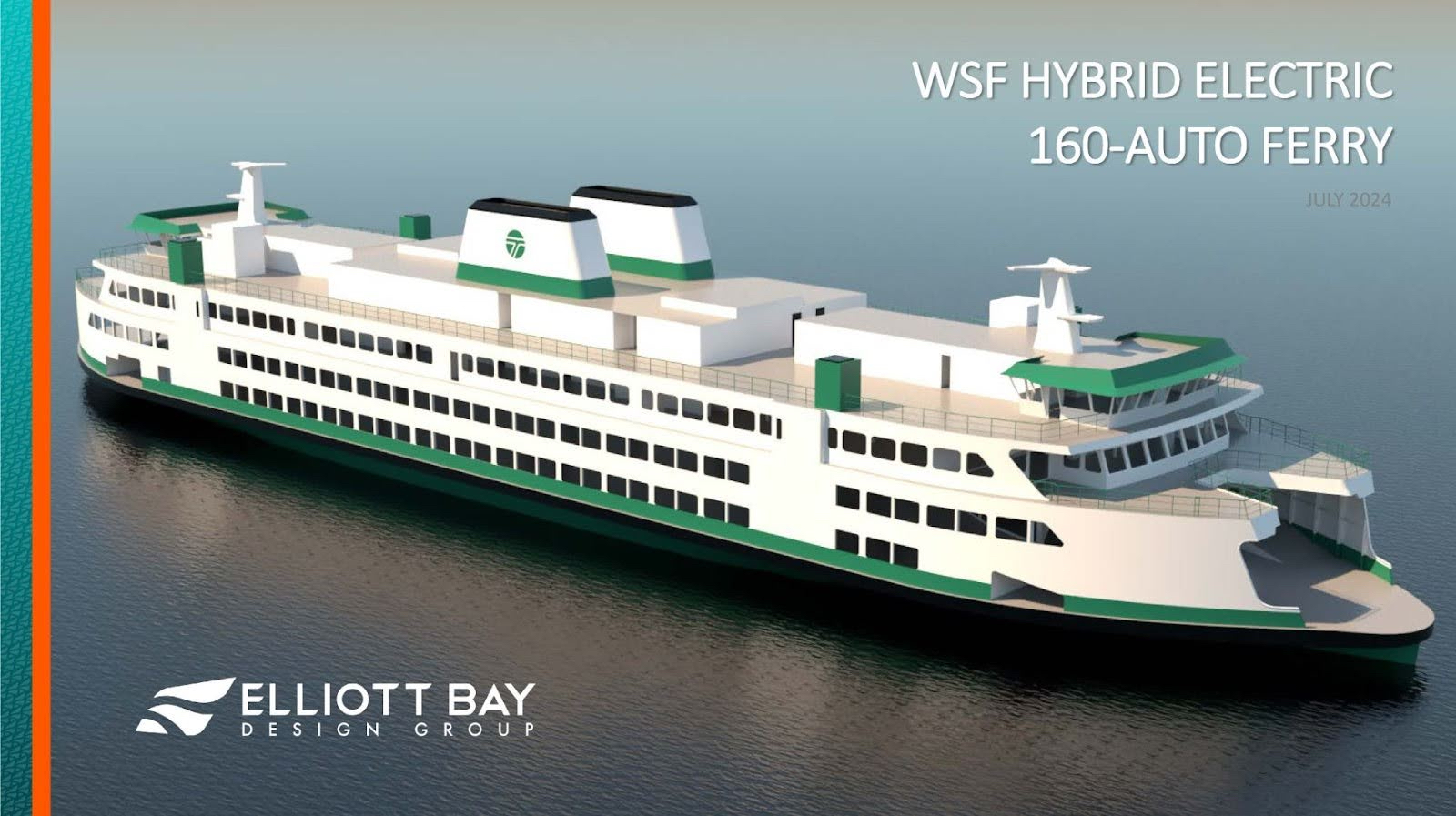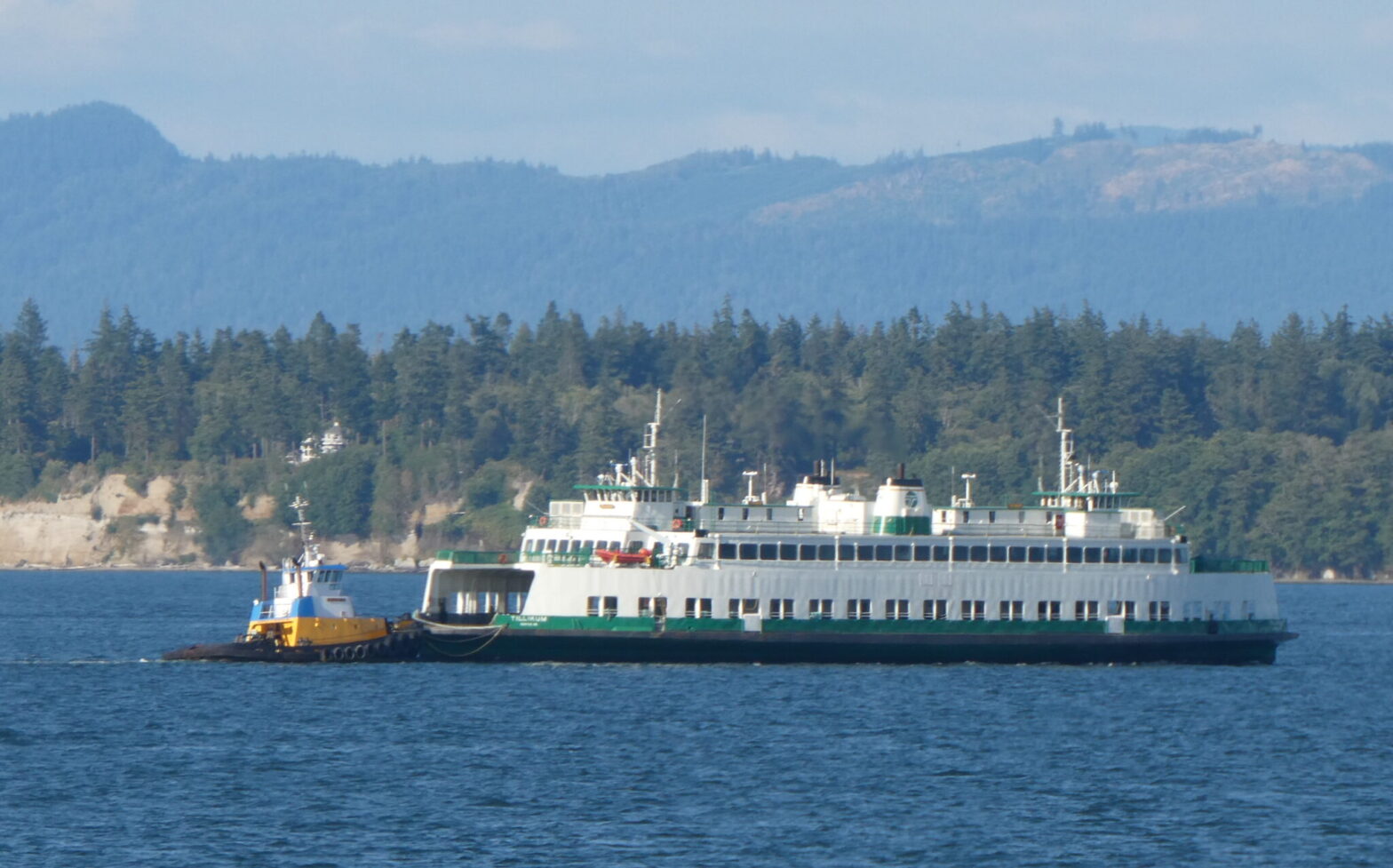Washington Gov. Bob Ferguson celebrated the state's award of a $715 million contract for three hybrid-electric ferries in July as a milestone in its quest to improve the country's largest ferry system.
But under this deal, Washington State Ferries passengers will wait a year longer than planned for a new plug-in vessel to provide some relief to the overburdened system.
Because in return for an offer that was hundreds of millions of dollars less than a local competitor, the Florida-based company that picked Ferguson has until 2030 to deliver the first of the three ferries.
Washington State Ferries desperately needs new boats to improve its reliability and return service to pre-pandemic levels. This is the first time in more than 50 years that Washington has turned to an out-of-state shipbuilder to source new car ferries.
The state has stipulated in the tender conditions that the first boat will arrive in 2029. But the final contract for the construction of the ferry shows that Eastern Shipbuilding received changes to deliver the first boat in August 2030, the second boat in August 2031 and a third the following year.
“Cost savings outweighed the longer schedule”
The decision was to prioritize tax savings over faster delivery glossed over in summer. The governor made the final decision on awarding the contract.
“Eastern Shipbuilding's offer was tens of millions of dollars less than the competing offer per ship, even though they asked for an additional 12 months beyond the original 48-month time frame,” ferry system spokesman Kurt Workman said in an email.
“We believe their request reflects a realistic timeline for delivery of the first ferry,” Workman added. “After a comprehensive evaluation process, we concluded that the cost savings outweighed the increased schedule and awarded the contract to Eastern.”
Eastern Shipbuilding declined to answer specific questions about why the first ferry took five years to complete. Instead, the company emailed a one-paragraph statement from its CEO: Joey D'Isernia.
“Over the last 50 years, we have delivered more than 350 highly complex vessels with 99% on-time delivery,” said D’Isernia. “Our proposal for Washington State Ferries was based on decades of experience building vessels with similar requirements and levels of complexity, making it realistic in terms of both cost and schedule.”

Only one other shipyard, Nichols Brothers, applied to build the new plug-in hybrid ferries, which can carry up to 160 cars and 1,500 passengers each. The Whidbey Island and Everett-based shipyard's total offer for three ships was more than $350 million higher than Eastern's.
Gavin Higgins, chief executive of Nichols Brothers, said their submission met the state's four-year delivery deadline for the first ship. “The need for quick delivery was a big problem,” he recalled for the state.
“We bid as per the specifications. We didn't know about the extra year until I got a call telling me we didn't get the offer,” he said.
Earlier this year, Nichols Brothers and a number of northern Puget Sound allies unsuccessfully lobbied the governor to split the contract for the new ferries to protect local jobs and boost the region's shipbuilding industry.
Frequent ferry travelers like Amy Drayer of Vashon Island have already braced for news of delivery delays given the novelty of the state's chosen hybrid-electric propulsion system. Drayer sits on the steering committee of Islanders for ferry action.
“We wouldn’t be surprised if the delivery schedule was pushed back even further,” she said sadly. “We're building something completely new. Any time you build something new, there's a learning curve.”
Washington introduced its first plug-in ferry added to its fleet last summer when the Vigor Seattle shipyard completed the conversion of the Wenatchee diesel ferry to hybrid-electric propulsion.
This project went well over budget, was completed nearly a year late, and the boat has experienced mechanical problems since its inception, which may be one reason Washington State Ferries was willing to allow additional time for delivery of the new boats.
Drayer said she did not accept the time and cost of the decision.
“If time and money were a concern, we would order clean diesel engines for the new ferries,” Drayer said, adding that her group is not advocating for restarting the ferry design at this time.
Hurricane risks
Eastern Shipbuilding also requested a grace period in the event a hurricane damages its facilities in the Florida Panhandle while the new ferries are under construction.
The revised contract terms accepted by Washington include penalties for late deliveries in the event of a hurricane. Otherwise, Eastern Shipbuilding could pay a penalty of $7,500 per day for each day beyond the agreed delivery times, increasing to $15,000 per day if the delay lasts longer than three months.
Eastern Shipbuilding suffered significant damage during Hurricane Michael in 2018. At that time, the shipbuilder was commissioned to build three new ferries for the Staten Island Line in New York.
Accordingly the Staten Island AdvanceThe three Staten Island ferries carrying 4,500 passengers were each delivered more than a year late due to delays caused by the hurricane and then COVID-19.
Higher price, additional uncertainty
Washington State Ferries currently has 21 ships of different sizes and ages in his fleet. The agency's long-term plan is to grow 26 ferries ensure reliable service on every route, taking into account maintenance stops and a reserve ship.
The agency tentatively plans to deploy its new ferries on the Mukilteo-Clinton route first, likely followed by the Seattle-Bremerton route.
On the new ferries, the center of the ship's hold will be equipped with racks of water-cooled rechargeable batteries, allowing each ferry to run entirely on electricity most of the time. The engine room will also have two diesel generators as a backup power source.
Assuming they use green electricity to recharge at the terminals, the new ferries are expected to deliver a significant reduction in fuel consumption and an associated reduction in greenhouse gas emissions.
The state's goal is to convert six existing ships to hybrid-electric propulsion and build 16 new plug-in boats by 2040. Both Democratic and Republican lawmakers have done so expressed doubts this year about whether that schedule will be affordable or achievable.
